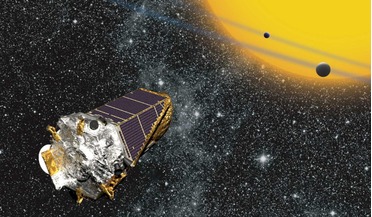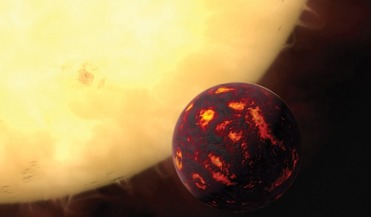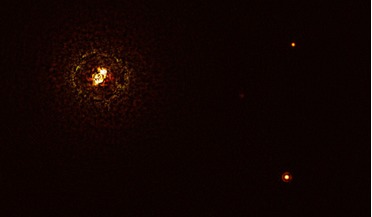 17 June 2020
Six billion Earth-like planets could be in our galaxy, new study says
17 June 2020
Six billion Earth-like planets could be in our galaxy, new study says
... water, and potentially life, on its surface. "My calculations place an upper limit of 0.18 Earth-like planets per G-type star," says UBC researcher Michelle Kunimoto, co-author of the new study in The Astronomical Journal. "Estimating how common...
 09 October 2019
This year's Physics Nobel Prize winners
09 October 2019
This year's Physics Nobel Prize winners
...is “for the discovery of an exoplanet orbiting a solar-type star.” James Peebles’ insights into physical cosmology have enriched the ... outside our solar system, an exoplanet, orbiting a solar-type star in our home galaxy, the Milky Way. At the Haute...
 March 2016
Saving Earth from an Expanding Sun
March 2016
Saving Earth from an Expanding Sun
...a habitable planet! Sure, it’s five billion until our G-type star leaves the main sequence, expands prodigiously and eats Earth. ... which a planet is just the right distance from its home star so that its surface is neither too hot nor too cold ...
 March 2017
Twinkle - a mission to unravel the story of planets in our galaxy
March 2017
Twinkle - a mission to unravel the story of planets in our galaxy
... and Professor of Physics and Astronomy at UCL. References 1 Mayor M, Queloz D (1995) A Jupiter-mass companion to a solar-type star. Nature 378:355-359 2 Tinetti G, Encrenaz T & Coustenis A. Astron Astrophys Rev (2013) 21: 63. doi:10.1007/s00159-013...
 10 December 2021
Extreme exoplanet changes the picture about massive stars as planet hosts
10 December 2021
Extreme exoplanet changes the picture about massive stars as planet hosts
... the more high-energy radiation it produces, which causes the surrounding material to evaporate faster. As such B-type stars are often considered to be inhospitable hosts when it comes to planet building. And b Centauri is no exception. Owing to its...
 October 2015
Finding Earth-like worlds: the tale of how Kepler-452b was discovered
October 2015
Finding Earth-like worlds: the tale of how Kepler-452b was discovered
... with just 4% more mass. Nevertheless, it is still another G2-type star. Around it is a small planet that has a good chance ...a paper analysing the Kepler data. What that showed was that G-type stars appear to be twice as variable as the Sun. That was ...